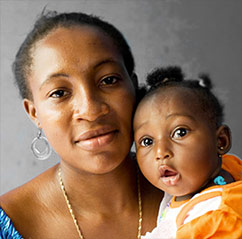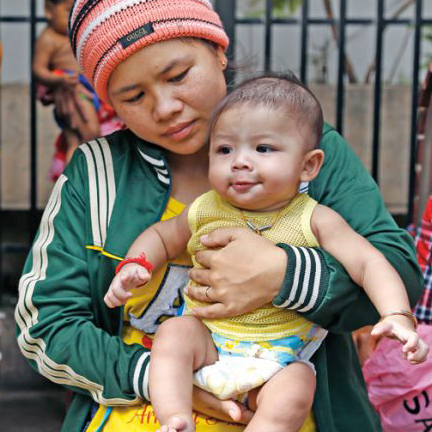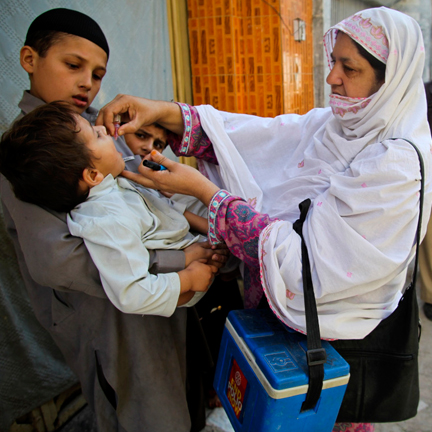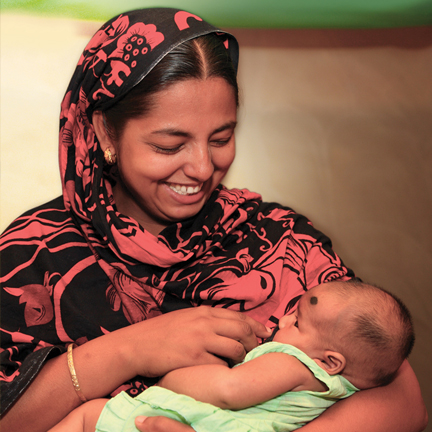Improve Maternal and Newborn Health and Nutrition
Providing quality healthcare and nutritional support for all women and babies is a small price to pay for a healthy generation.
In spite of substantial advances in maternal and newborn health over recent decades, roughly 300,000 women still die due to pregnancy-related complications every year. There is widespread evidence and agreement within the global community on what needs to be done to prevent these deaths and improve the health, nutrition, and wellbeing of women and babies. Clinical interventions and health services need to be delivered across a continuum of care — before, during, and after pregnancy. There must also be an enhanced focus on the role that nutrition plays in saving lives and safeguarding the health of women, men, girls and boys and newborns.

Need Evidence
and Strategies?
-

Every two minutes, a woman dies from complications in pregnancy or childbirth – the majority of these deaths are preventable
-

The number of stillbirths that occur annually - 98% of them in developing countries
-

Maternal mortality is one of the leading causes of death amongst 15-19 year olds globally
-

The odds of maternal death are doubled in mothers with iron deficiency
-
If we meet the need for modern contraception and provide all pregnant women and newborns with quality care, maternal deaths would decrease by 73% and newborn deaths would decrease by 80%
-

Every dollar spent on scaling up nutrition interventions for pregnant women and children yields $16 in returns
Investing in girls and women creates a ripple effect that yields multiple benefits, not only for individual women, but also for families, communities, and countries. Investments in maternal, newborn, and reproductive health not only save lives, they increase both social and economic benefits for developing nations. Given the important role girls and women play in contributing to national and global economies, ensuring they are healthy makes them more likely to save, invest, and help their societies thrive.
Solutions in Action
-
Improving Midwifery Care in Cambodia
Maternal and newborn mortality has been falling significantly in Cambodia since 2005. Key to this decline was a notable investment in midwifery education and a marked increase in the number of midwives providing antenatal care and deliveries within an expanding primary healthcare network. Ensuring increased access to quality maternity care was led by the government, with the support of a range of partners, including NGOs and UN organizations. Access to improved primary healthcare, with a focus on midwifery, was also seen across the health system, including the public and private health sector. In 2010, skilled birth attendance in a facility accounted for 55% of all births, and home deliveries with a midwife for 16%. Pre-service education and in-service training for midwives has been prioritized and all health centers have at least one primary midwife. Learn more >> -
Pakistan’s Lady Health Worker Program
With many urban-rural disparities and a drastic imbalance in the health workforce, including insufficient numbers of health workers, nurses, and skilled birth attendants, through the Prime Minister’s Programme for Family Planning and Primary Care, Pakistan created the Lady Health Worker cadre in 1994. Lady Health Workers must be recommended by the community, have at least eight years of schooling, and undergo extensive training. The goal of this program is to equip female health workers with the skills to provide essential primary health services in rural and urban slum communities. External evaluation has shown substantially better health indicators in the population served by Lady Health Workers. In the Punjab province, for example, Lady Health Workers have played a critical role in reducing maternal mortality rates. A 2006 study of the region revealed a drop in maternal mortality from 350 to 250 per 1000,000 live births. Infant mortality also declined from 250 to 79 per 100,000 live births. Learn More >> -
-
Scaling Up Breastfeeding in Bangladesh
Breastfeeding has been widely lauded for enduring health benefits for infants and their mothers. In the past six to eight years, exclusive breastfeeding in Bangladesh has increased by 13%. Bangladesh’s success has been attributed to community mobilization and media outreach around the importance of breastfeeding, along with comprehensive health worker training. This training serves to create a support system at health facilities that provide a vital resource for positive nutritional education. Bangladesh also utilized strategic technical experience of various stakeholders — including civil society, UNICEF, and the Alive and Thrive initiative — incorporated existing evidence and best practices, and worked across sectors to create uniform messaging and practice around breastfeeding promotion. Learn More >> -
The Impact of Legal Reform of Abortion in South Africa
In 1996, abortion was legalized in South Africa, after which there was a significant decrease in infections and hospitalizations for women who had undergone unsafe abortion, especially younger women. A review of national data indicates that abortion mortality dropped by more than 90% between 1994 and 2001. Learn more >>
Policy Asks
-
Guarantee access to quality, affordable care before, during, and after pregnancy — inclusive of midwifery and obstetric care, modern contraception, safe abortion, and post-abortion care.
-
Support the prevention, screening, and treatment of common challenges during pregnancy such as obesity, gestational diabetes, and high blood pressure.
-
Address barriers to healthcare, including user fees, poor infrastructure - including inadequate access to clean water, sanitation, and hygiene - and a lack of essential supplies, medicines, and micronutrients.
-
Include girls, young people, and women in the design and implementation of maternal and newborn health and nutrition programs as context experts.
-
Promote and provide young people and women access to nutritious food, counseling on proper nutritional practices such as early initiation, exclusive and continued breastfeeding, and critical micronutrients.
-
Ensure that the full spectrum of maternal and newborn health, food security, and nutrition interventions are included in humanitarian response guidelines and protocols, financed, and implemented, including the Minimum Initial Service Package (MISP) and the minimum standards in food security and nutrition guidelines.





